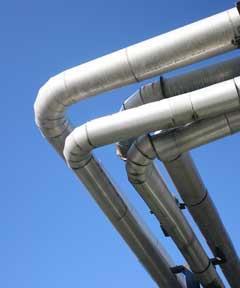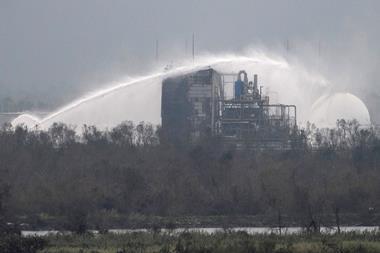AstraZeneca's Jon-Paul Sherlock returns the exchange
AstraZeneca’s Jon-Paul Sherlock returns the exchange
In the UK, the view prevails that chemistry has little contact with chemical engineering, particularly at university level. In industry the level of integration is greater, driven by the tangible benefits of close collaboration.

Chemical engineers have a different but complementary knowledge base. However, they also think and approach problems differently. It is not just what they know, but how they apply it. This diversity of thinking and perspective introduces some beneficial challenge into process development. Chemical engineers have a different perspective on scale up, derived from their ability to predict using mathematical models and their understanding of equipment and manufacturability.
2. Scale up should be predictable
Chemical engineers typically believe scale up problems can be anticipated providing there is sufficient understanding of the critical variable. For example, the number of theoretical plates affects batch distillations and laboratory equipment usually has more than plant equipment. Therefore modelling the physical properties and equipment provides a better basis for understanding than several laboratory preparations. To support science-based scale up it is essential to acquire data.
3. Measure the right thing
Chemical engineers are trained to work quantitatively, using data to support plant design. This approach works equally well for process design, providing the right variables can be measured.This sometimes presents a challenge as it requires a data rich environment typically absent in early process development and engineers must be adaptive and proactive in this regard. They do not have the same laboratory flexibility but can be equally creative through hypothesis, prediction and use of scenarios.
4. Physical rate processes are affected by scale
A process is dependent on the intrinsic chemistry, which is independent of scale, and physical transport phenomena; momentum, mass and heat transfer, which are affected by scale. A linear reaction profile indicates a mass transfer limitation and scale up of such a reaction profile may not go as planned. This is increasingly important in multiphase systems or if the intrinsic chemical reaction rate is fast. Transport of reagents between phases or fast reactions may generate different concentration distributions at scale and affect yield and quality. A molecule does not know whether it is in a 25ml flask or a 10m3 vessel, it will simply behave as determined by its surroundings.
5. Things can take much longer as equipment gets bigger
When moving from laboratory to plant it is not possible to keep all contributing parameters the same. In trying to keep one the same, others may be impacted detrimentally. The time required for charging reagents, to adjust temperature, to transfer materials, to disengage gases, separate liquid phases or filter solids could all change on scale up due to equipment limitations or geometry. Changing vessel dimensions will change heat transfer rates. As surface area to volume ratios reduce on scale up, exothermic reactions run in semi-batch mode, under isothermal conditions will require longer reagent addition times, which may affect quality.
6. Agitator speed does not determine the extent of mixing
Mixing in stirred tanks is a complex science and is affected by many equipment and process related parameters. It is therefore important to determine whether the process is sensitive to mixing before scale up. Ensure lab vessels are baffled, use high agitator speeds (1000rpm) and mimic vessel geometries. Be clear on what specific mixing duty the process requires.
7. Equipment provides opportunity as well as limitations
Chemical engineers are trained to design chemical plants and understand how they work. This can mean placing restrictions on the chemistry, particularly when processes are being conducted in multi-product plants. Examples include materials of construction that cannot be readily changed, difficulties storing and charging hazardous reagents, being unable to control temperatures at ? 0.1?C. However, timely and appropriate equipment selection could deliver an engineering solution that is better than developing sub-optimal chemistry. Additionally, the operating envelope defined by standard laboratory equipment is restrictive with respect to pressure and temperature when compared to commercial plant. To utilise this wider envelope alternative laboratory technologies should be considered.
8. Balanced reaction equations support better communication
Using tools such as those developed by UK-based process design experts Britest, chemists and engineers can collaborate and work using a common language. Ensuring reaction schemes represent what is actually reacting and what is being produced demonstrates good process understanding. It allows the effects of scale to be appreciated and equipment selection considered.
9. Thermodynamics is not just maths; things really are governed by it.
Equilibria can be explained by thermodynamics. This approach allows the extrapolation of data to new compositions and prediction from the behaviour of chemically similar systems. It can be used to prevent azeotropic solvent swaps ending where they started and to better understand a number of other operations dependent on phase equilibria.
10. Chemical engineers don’t bite and know more than ten things .
There is an optimal time for a chemist to collaborate with a chemical engineer, but it is not definable. However, it is far worse to miss an opportunity by holding off on a discussion than to talk things through early and get the most from the collective knowledge a chemist and chemical engineer will bring.
Jon-Paul Sherlock, process engineering team manager for AstraZeneca R&D in Charnwood, UK












No comments yet